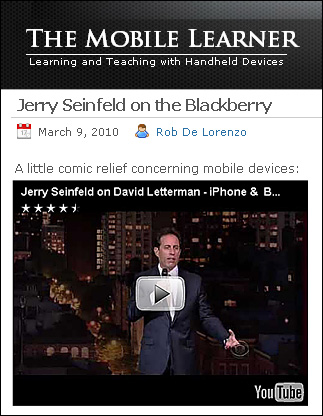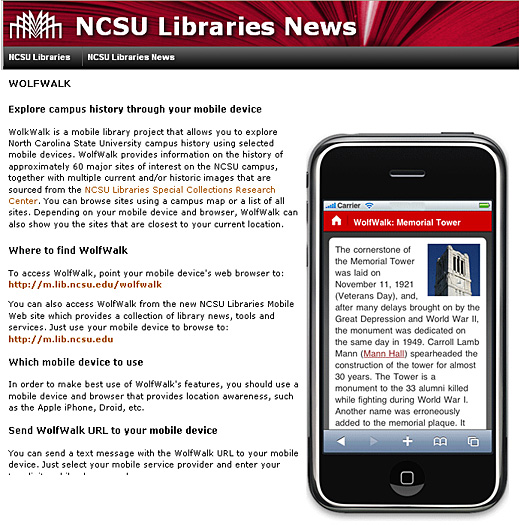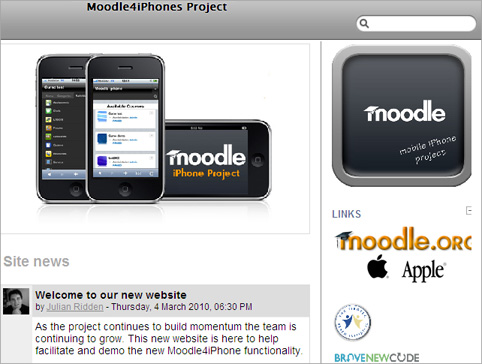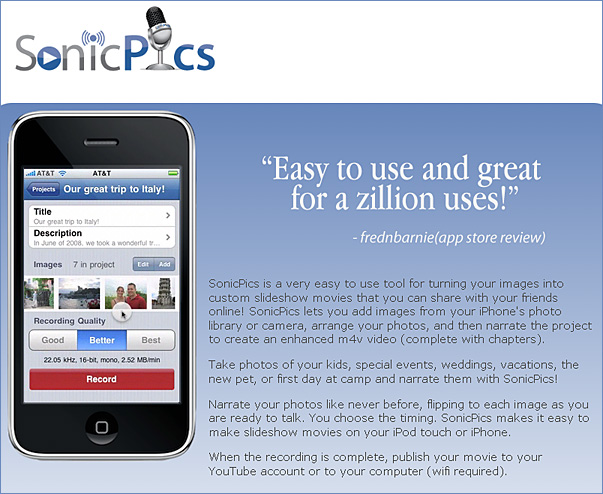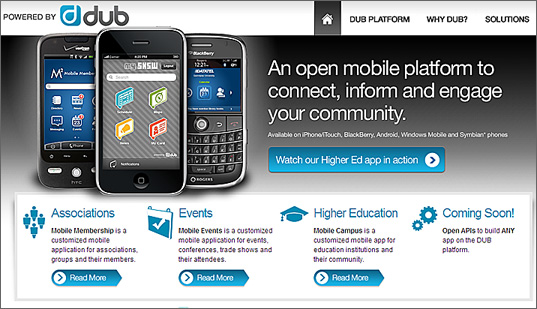Above resource is from the Mobile iEducator blog
Apps battling to bring movies to your phone — from CNN Tech by Eliot Van Buskirk
Video rental companies made big moves this week in the race to deliver movies to phones.
But as compelling as [the] thought of a movie in your pocket alone may be, this isn’t just about delivering content to handset.
The companies vying for your mobile movie dollars want to tie you to an ecosystem they hope will change your habits — and loyalties — at home, at work and in between (emphasis DSC).
All of them believe that owning mobile is a ticket to winning the other three screens — computers, televisions and tablets — because viewers want to pick up on one screen where they left off on another, just as they do when reading an Amazon Kindle e-book (emphasis DSC).
If they are right, the battle plan seems fairly clear: Winning the smartphone puts everything into play and makes the mobile device the key entry point to a video-on-demand lifestyle, way beyond its mundane ability to manage rental queues on the go.
From DSC:
How this situation turns out may very well impact the delivery of educational content. The convergence continues…but more and more, providing mobile access to content is becoming key.
Gartner outlines 10 mobile technologies to watch in 2010 and 2011 — from Gartner Research
Cisco unveils ultra-fast Internet technology — from CNNMoney.com
NEW YORK — Cisco unveiled a new Internet technology Tuesday that it says will provide the ultra-fast data speeds necessary to stay ahead of users’ rapidly growing online video demands.
The new technology, known as “CRS-3,” is a network routing system that will be able to offer downloads of up to 322 Terabits per second, according to the company.
Translation: Well in Cisco terms, the router will be able to provide download speeds of 1 Gigabit per second for everyone in San Francisco, download the entire printed collection of the Library of Congress in 1 second and stream every movie ever created in less than 4 minutes.
Cisco Chief Executive John Chambers acknowledged that many skeptics will say that those speeds and network capacity are not necessary, but he argued that the fast-growing media usage on mobile phones will ultimately demand it.
Also see:
Cisco’s vision of the future
WolfWalk Turns Mobile Devices into NC State Time Machines — from NCSU Library News
- Intuitive user interface.
- Automatically synchronizes your images to your audio recording.
- Make .m4v movies of your images and narrations from your iPhone or iPod Touch.
- Record up to 60 minutes per session!
- Choose from good, better or best quality levels for audio.
- Easy image selection and editing.
- Give images unique names and descriptions that can optionally be shown during recording.
- Image names become chapter markers in exported recordings.
- Pause while recording.
- Build slide shows with photos from photo albums, camera roll or built in camera.
- Quickly jump to any image during a recording using the pop-up image chooser.
- Recordings processed right on your phone, no 3rd party service required!
- Transfer movies to your computer via WiFi web sharing (requires WiFi connection).
- Upload movies to YouTube.
- Chose to make your YouTube movies private.
- Share your movie’s YouTube link via email.
- Class field trip
- New baby
- Lecture recording
- Creating mini-presentations on the road
- Out with friends
- Travel Logs
- Conference notes
- Honeymoon
- Museum tours
- Create Audio books
- Lab notes
- Insurance claims
- Accident documentation
- Medical diagnosis / dictation
- Land surveys
- Real estate tours
- Home shopping
- New town experiences
- Staff introductions
- Photo tours
- Language instruction
- Helping boyfriend study names/faces before meeting girlfriend’s family.
Original resource from:
Creating Digital Storybooks on the Fly with Sonic Pics — Living in the 4th Screen
8 things Your Phone Will (Probably) Replace — from TheNextWeb.com by Matt Brian
Macworld Expo 2010 Best of Show winners — by Roman Loyola, Macworld.com
Cisco Sees Mobile Data Doubling Annually — from WSJ
Wireless-data traffic is expected to double every year through 2014, driven by a sharp increase in the volume of handheld devices as well as mobile video content, according to a Cisco report. Data use will surge as cellphone makers produce more Web-enabled handsets. Cisco says there could be more than five billion such devices connected to mobile networks in four years.
“Ultimate Mashup” a Glimpse into the Future — from blog.programmableweb.com by Adam DuVander
“A new iPhone app is trying to take the fiction out of Science Fiction. Movies have long portrayed people in the future speaking commands to computers. Siri, based on $200M of research and development, is trying to make it so.”










